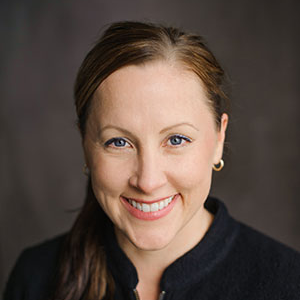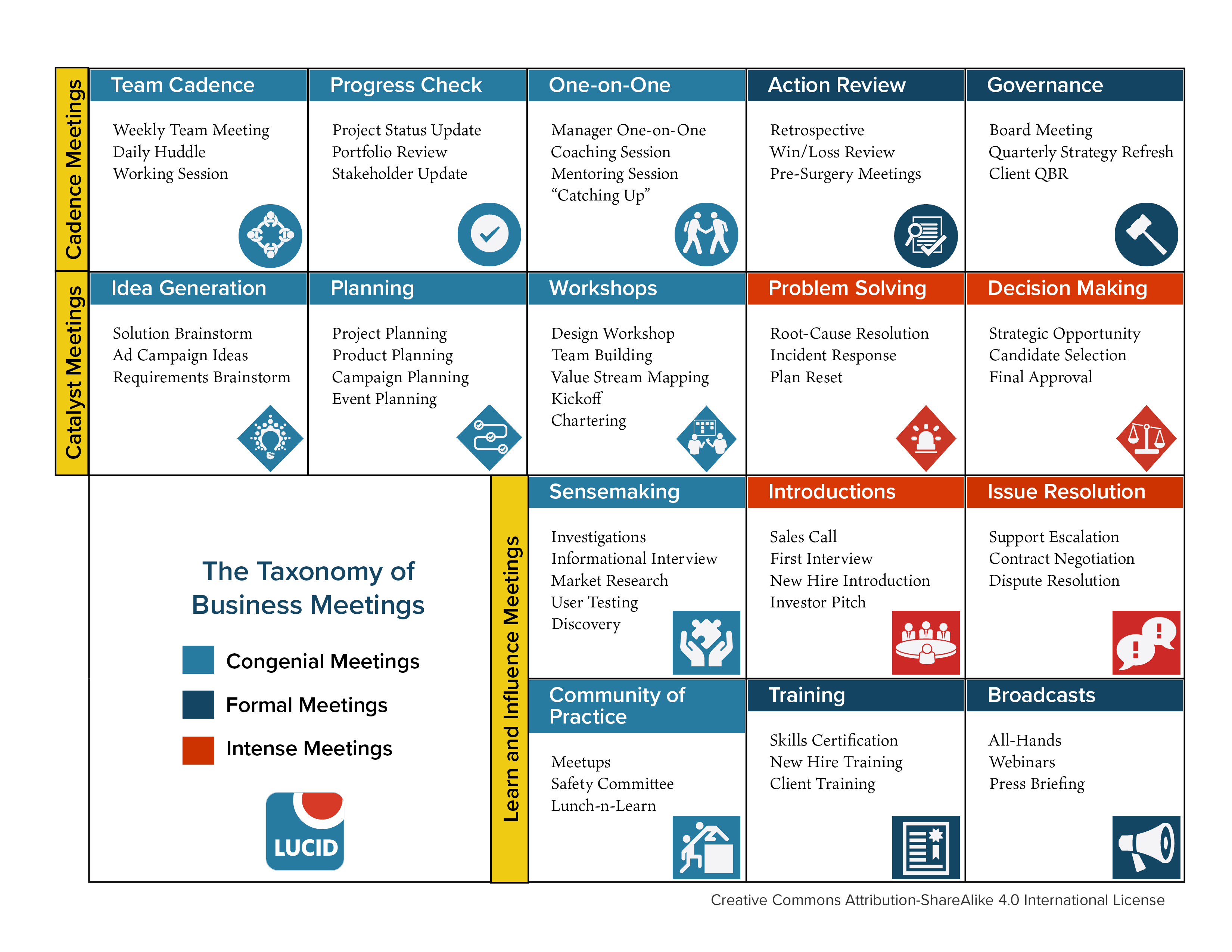Key Learnings About Meetings and Meeting Software
The only thing that is constant is change.”
Heraclitus
2015, like all the years before it, was a year of big changes for Lucid Meetings. We’ve had a very good year. Our platform has become more mature and our customer base has grown. We’ve met new people and created new cooperative relationships with other companies. Business is good.
But we’ve all been around long enough to know that these external trappings of success can be fleeting; what we can achieve and how we grow both as a company and as individuals will depend entirely on what we do next.
That’s why, when we look back at 2015, we pay special attention to what we’ve learned. Experience and knowledge gained are the key assets that can’t be lost due to a shift in the market or any other whim of fate, and that will inform how we go boldly into 2016.
We asked each member of the Lucid leadership team to reflect on the key lessons they learned in 2015, and share them with you here.
What we Learned in 2015
About the State of Business Meetings
 John
John
In 2015 we took a fresh look at the number, effectiveness, and cost of meetings in the U.S. We had a nagging feeling that the oft-quoted numbers for meetings per day (11 million), time wasted in meetings (50%), and productivity loss associated with meetings ($37B USD) were based in longstanding lore and, at the very least, needed updating. What we found was both shocking and encouraging.
Our first finding was that the 11 million meetings per day number had no traceable basis. We followed the trail as far back as the early 1970’s before hitting a dead end. Yes — we’ve all been quoting that same number for more than 40 years, each time referencing a source that itself referenced another non-attributable source. It was time for some new analysis.
Toward the end of 2015, we conducted our own meta-study of the existing meeting data, along with some new statistical analysis to bring the original numbers up to date. Our best estimates show that we conduct anywhere from 36 million to 56 million meetings per day in the U.S. Those are shockingly large numbers! But what do they tell us?
While 36 to 56 million meetings per day sounds like a whole lot of meetings, the real question is whether they’re effective or not. Meetings that move work forward, and provide great value for the time and money spent, are a boon for business. Studies show that more than 80% of people surveyed rated their meetings as both productive and effective. That’s encouraging!
Overall we learned that we’re conducting way more meetings than popularly quoted over the past 40 years, but we’re getting far more value from those meetings than previously reported. That’s food for thought as we enter 2016.
About People Who use Lucid Meetings
 Tricia
Tricia
After interviewing multiple teams for case studies over the course of 2015, I learned that Lucid customers have unique perspectives and approaches to the using the platform.
For example, Cloud Four uses Lucid to document meeting notes and manage technical projects, focusing on outward communication with clients and keeping everyone informed.
Lunette also uses Lucid to manage projects, but their focus is more on driving internal marketing initiatives forward with their globally-distributed team. They collaborate on agendas before meetings to keep organized and stay productive.
OSDI uses Lucid to easily manage large groups with order and security. They’re able to see exactly who is on the call, coordinate who speaks and when, and access attendance records and voting results at any time.
One consistent benefit that many teams realized over the course of using Lucid was the integration of multiple features. Most meeting software is designed to do one thing (web conferencing, screen sharing, or meeting productivity). Once users realize that Lucid is all of these in one, they get excited because they didn’t realize it was possible.
About Designing Better Meetings
 Elise
Elise
We first launched templates for Lucid Meetings in April of 2015. Each template includes a draft agenda and full instructions for running a specific type of meeting: a team meeting, a board meeting, or a sales call, for example. The month before the launch, we worked hard to put together a handful of templates for running regular team meetings – agile stand ups, project updates and the like.
That first release included straight-forward status meetings templates. We picked status meetings because they’re the most common type of meeting, and also because we thought they would be really easy to build. It actually took quite a bit more work than we expected – nearly a month to design, test, and refine four simple meeting templates.
Ok – so the first templates took longer to build than we’d hoped. Surely, though, we’d get faster with experience and become a well-oiled meeting template engine. We fully expected to be publishing one or two new templates every week by the end of the year.
While we did get the process worked out, we learned that the design of a new template can’t be rushed. A great meeting is a living, real-time event involving multiple people working together. To see if a template can spark a real meeting to life, it has to be tested by a group, and then refined.
From start to finish, the process for creating a new meeting template takes at least 3 weeks. This held true regardless of whether we designed the template ourselves, or if we worked with outside experts like Anna O’Byrne on Strategic Planning and Lisette Sutherland on Working Agreements for Remote Teams. Some things simply can’t be rushed.
About Building Meeting Software
 Amy
Amy
Working well with others makes us stronger. It’s not as if we didn’t already know that! In 2015 we integrated Lucid Meetings with several products and services to work better for our customers.
In May, we added social login. This could have been complicated — it involves several separate services (Google, LinkedIn, Twitter, and Facebook). Instead, it was pretty straightforward, thanks to existing work we could build on. Authentication by a third-party service is well-defined in the OAuth and OAuth2 standards, and since a lot of people want to provide exactly this capability, there are well-developed software libraries available to do most of the work. All we really had to do was research a bit, add a library, configure it, and write a small bit of our own code. And test it, of course. Social login is well-established from a user interface perspective as well, so by doing it “just like everyone else,” we know that customers who want it will already know how to use it.
In July, we added Google Hangouts to our audio/video conferencing options. This provided surprising challenges. The heart of this integration is a link that opens a hangout — sounds simple! The tricky bit is that Google creates the link on the fly, and we need to offer the same link to everyone in the meeting. We elected to use Google’s API to build a small Hangouts app that would send the URL back to Lucid Meetings when the facilitator starts a hangout. As a bonus, this let us include a summary of the meeting agenda in the hangout, and gives us a nice foundation to do more with Hangouts in the future.
Google’s APIs are rich and relatively easy to use once you find what you need, but a recurring theme for us has been that Google’s documentation is focused on something other than what we’re trying to do. Google’s UIs for developers and admins are notoriously challenging as well. We probably spent more time wrestling with setting up the correct configuration for our apps on the Google side than we did working with code. It was worth it, though — we enjoy having the Hangouts option for our own meetings.
In Fall 2015, we added TurboBridge WebRTC support. (What??) That is, we added a button to our TurboBridge audio option that lets you join a call using just your web browser and your computer’s built-in audio. We’ve wanted to do this for a long time, and it seemed like it might be a challenging project! However, our partners at TurboBridge made it easy by providing a well-tested javascript library, with documentation and sample code, for connecting to their service and managing a call. All we had to do was figure out which parts we wanted to use and what the button should look like! (Well, not really. We also did some work to ensure that we were only offering that button in web browsers where it would work, and we did a lot of testing. And we were reminded of how hard it can be to get a button just right.)
All of this reminds us that the difficulty or ease of a project is largely a function of what’s already been done and who you’re working with. Adding a “Call with Computer” button to our TurboBridge integration was surprisingly easy because TurboBridge made it easy for us. Social login was relatively easy (and we can expect, stable) because of the work of many people who wanted to be able to do the same thing. Integrating Google Hangouts wasn’t exactly hard, but the path seemed strewn with more obstacles. All of these were welcome additions that make Lucid Meetings better.
What did your organization learn last year?
Now it’s your turn. What did you learn in 2015, and what did your organization discover together that will inform your approach to the year ahead? Share in the comments if you feel so moved, but more importantly, take a moment to reflect together with your leadership team. And welcome to 2016!



